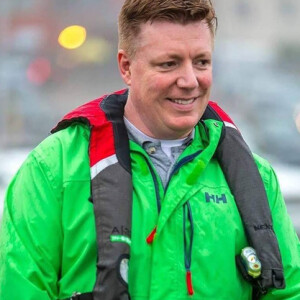As I sit down to write this, I’m still shaking off the jet lag from a week of meetings at Lloyd’s of London. Lloyd’s was buzzing with a range of issues: the pending North Atlantic hurricane season, tensions in the South China Sea, the potential for increased interference with shipping off Iran, and the ongoing conflicts in Ukraine and Gaza and the implications thereof for coverage in the Black- and Red Seas.
However, the number one topic — by a country mile — was the Dali bridge accident and the significant ramifications that are already falling into place following the allision between the 9,971 TEU container ship and Baltimore’s Francis Scott Key Bridge.
Anyone with even a rudimentary grasp of how my industry works can guess the first issue: this incident will result in substantial insurance claims. Experts estimate that insurers may face claims of up to $3 billion. This figure is double the largest-ever protection & indemnity (P&I – liability relating to vessels) claim to date, which was the $1.5 billion collective loss from the 2012 Costa Concordia disaster. One excess P&I underwriter I met with put the potential loss in context by pointing out $3 billion would wipe out 20 years of underwriting profit across Lloyd’s.
Another big topic was the complex insurance structure around this incident. The marine insurance sector operates with a complex and layered structure of insurance and reinsurance designed to minimize, transfer, and offset financial risk. While it’s too early to definitively say whether this structure will be breached, the Dali incident has raised concerns about its limits.
Something else that cannot be ignored is the incident’s location and our well-deserved reputation for aggressive and expensive litigation here in the States. The collapse of the bridge, the loss of life, and impact on U.S. East Coast trade and the Port of Baltimore all contribute to the complexity of the situation once it reaches the courts.
Operational impacts and trade disruptions continue also, even with the impressive (and often innovative) efforts underway to clear debris, channels, and terminal backlogs. The collapse of a vital regional transport link will continue to affect trade for some time to come, and as we’ve seen in recent memory with the Ever Given incident in the Suez Canal and general disruptions caused by Covid, a supply chain rupture only exacerbates existing pressures and can have an outsized influence on regional and national economies.
The incident is also prompting a lot of searching questions about ship maintenance, tug assist, and why the bridge wasn’t better protected. These are broader than Baltimore. I don’t pretend to have any of the answers (my armchair NTSB investigator badge never being issued), but I do know that any incident causes underwriters to break out the microscopes and examine impacted industries and sectors in fine detail.
In summary, the Dali bridge accident poses challenges to the marine insurance system, and its impact will reverberate for many years. And in what won’t be a surprise to anyone, marine insurance rates are likely to increase as a result.




